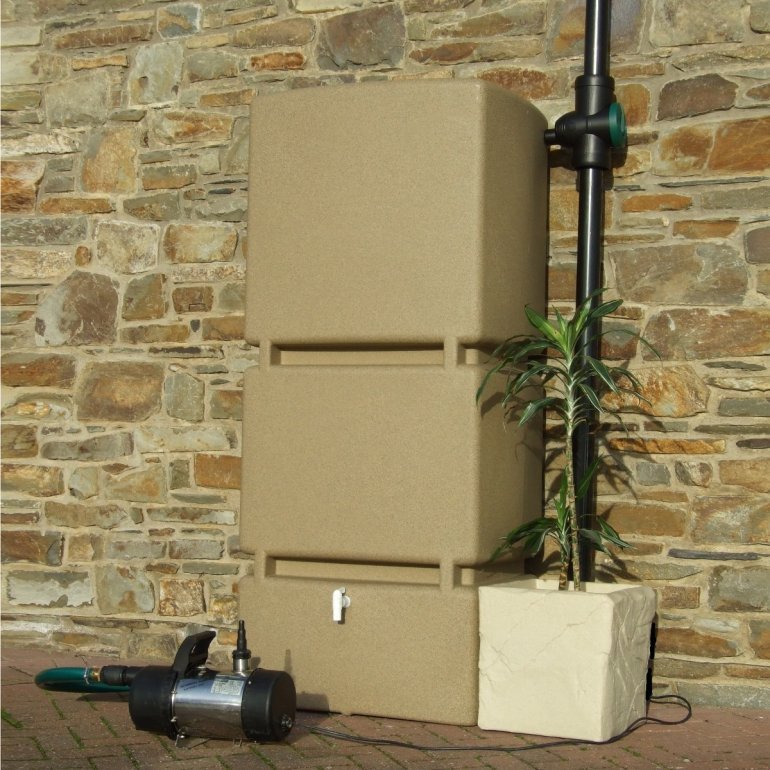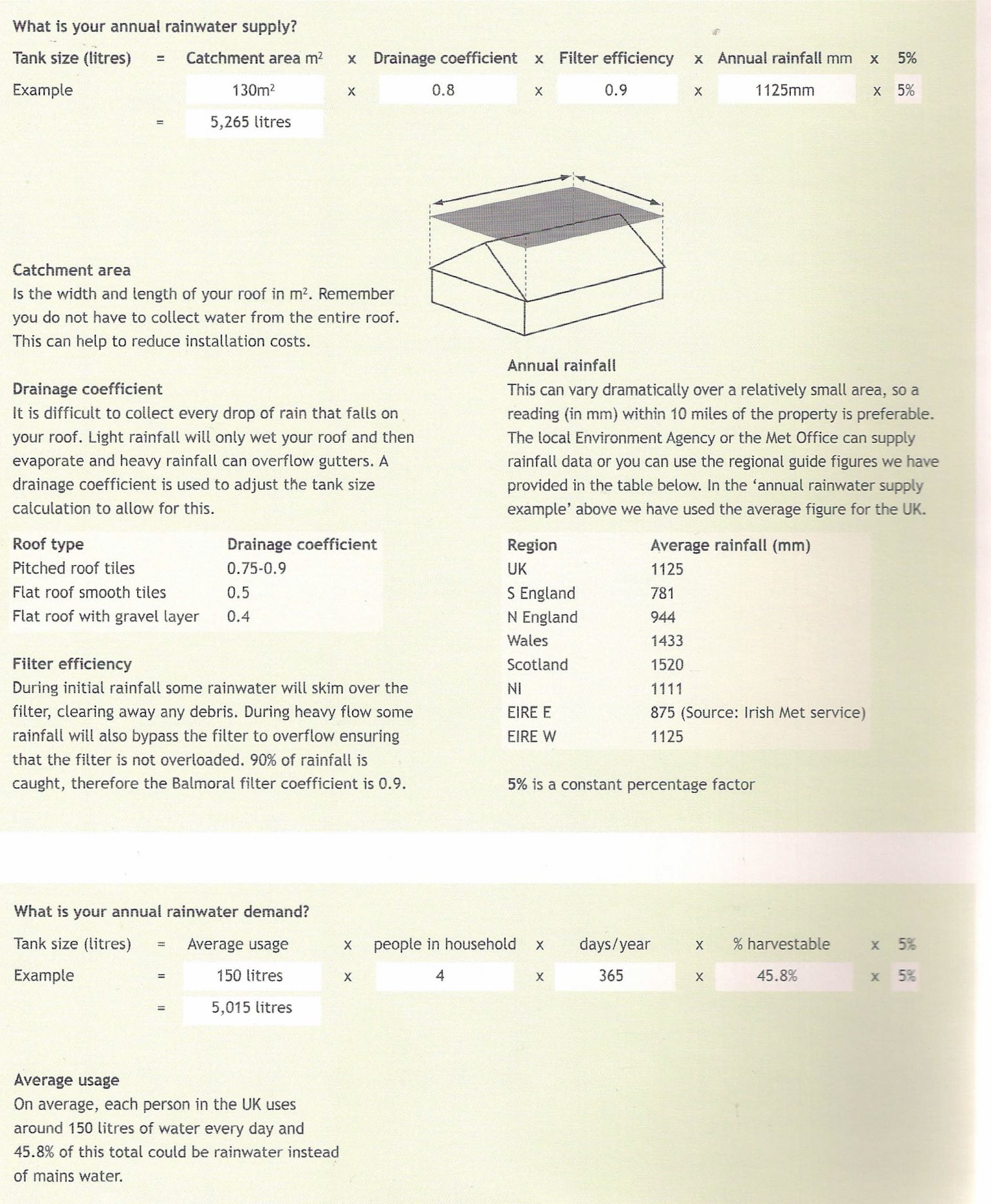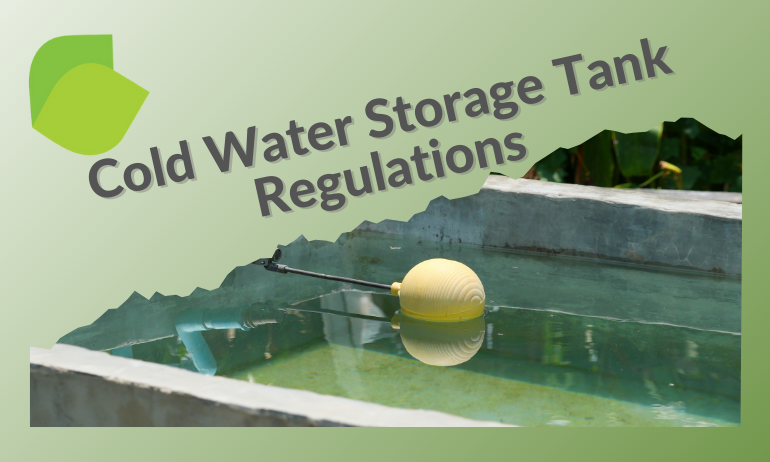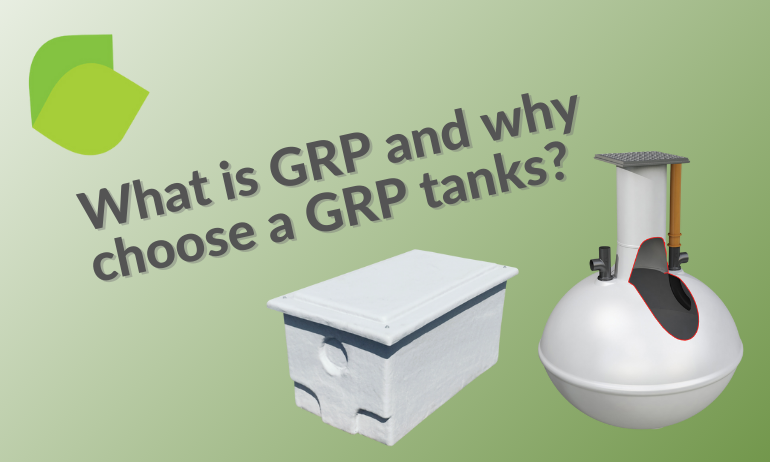What is Rainwater Harvesting?

What is Rainwater Harvesting?
Rainwater harvesting is the collection and storage of rain, rather than allowing it to run off. Rainwater is collected from a roof-like surface and redirected to a tank, either above ground or underground. Rainwater harvesting is one of the simplest and oldest methods of self-supply of water for households, and residential and household-scale projects, usually financed by the user. However, larger systems for schools, hospitals, and other facilities can run up costs only able to be financed by owners, organizations, and governmental units.
As the population grows, demands on mains water continues to rise. Coupled with consumer demand for companies to reduce their environmental impact, rainwater harvesting is increasingly sought after by both the general public and commercial organisations.
The average household uses around 150 litres of water per day, just 3% of which is for human consumption. With a properly implemented rainwater harvesting system in place, it is possible to use up to 50% less treated water without any effect upon levels of hygiene or comfort. Rainwater harvesting is a sustainable solution to rainwater management challenges.
What Can Rainwater Be Used For?
Rainwater can be used for watering gardens, washing cars, livestock, irrigation, domestic use such as cleaning, washing machines and toilet flushing, and domestic heating. The harvested water can also be used as storage for firewater and in commercial and manufacturing processes.
Rainwater is not suitable for drinking or for use in showers and baths. Rainwater is generally free of harmful minerals and in most cases chemicals but can be adversely effected by air pollutants and/0r contamination by animals in the catchment area. The only way rainwater can be used for drinking water is if it is treated by ultra-violet filters which are not practical in domestic use as generally a rainwater tank will not store enough water for total consumption in a domestic situation.

Why Install a Rainwater Harvesting System?
In many new builds, the council require that a rainwater harvesting system be installed to take pressure from the existing already under pressure water system. In retrofit buildings, the using a rainwater harvesting system reduces the stormwater run-off. It makes washing machines run more efficiently by using less detergent as the water is softer and prevents the build-up of limescale in appliances. Rainwater is also kinder to plants for garden watering.
To see our full range of both above ground and underground rainwater harvesting systems click Rainwater Harvesting Systems
How Do I Size My Rainwater Harvesting System?
The size of a rainwater holding tank must match the demand for water with it’s availability as closely as possible. BS 8515:2009 provides an authoritative and industry-approved means of calculating the optimum size of tank for household water use. Unlike other industries it is better to reduce the size of the tank rather than over size it if in doubt as to the requirement. This is due to the benefit of allowing the tank to overflow at least twice a year to flush out floating debris. The tank chosen must therefore be a balance between rainwater supply and water demand. In order to correctly size the tank, the capacity should be the lesser of either the rainwater supply or the water demand. A worked example demonstrating this principle is shown below:-

To see our full range of both above ground and underground rainwater harvesting systems click Rainwater Harvesting Systems

Cold Water Storage Tank Regulations 2023

What is GRP and Why Choose a GRP Tanks?

 Login
Login